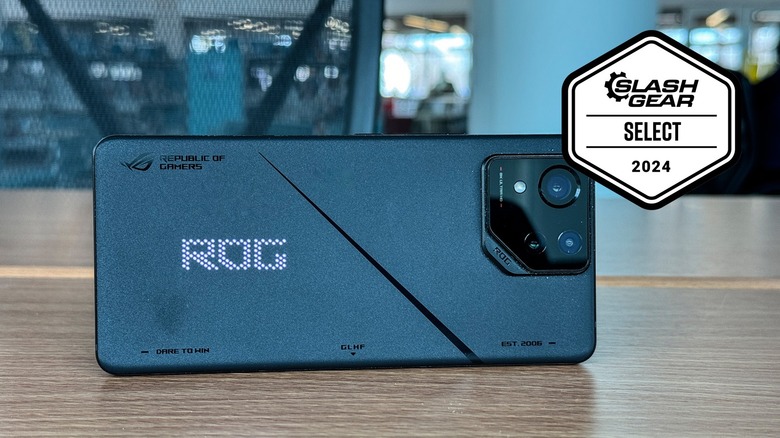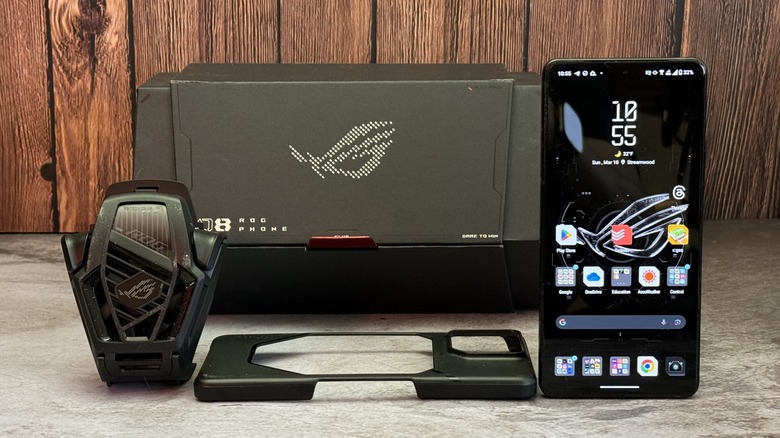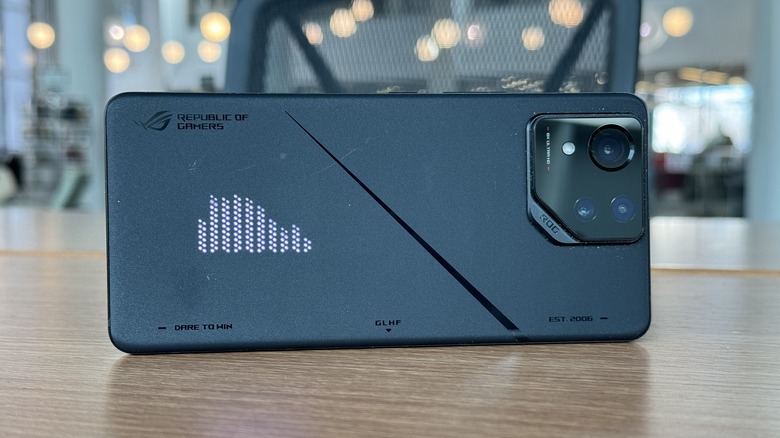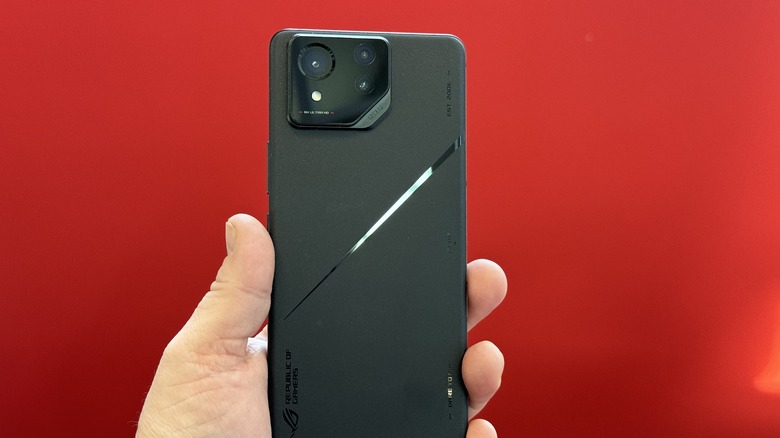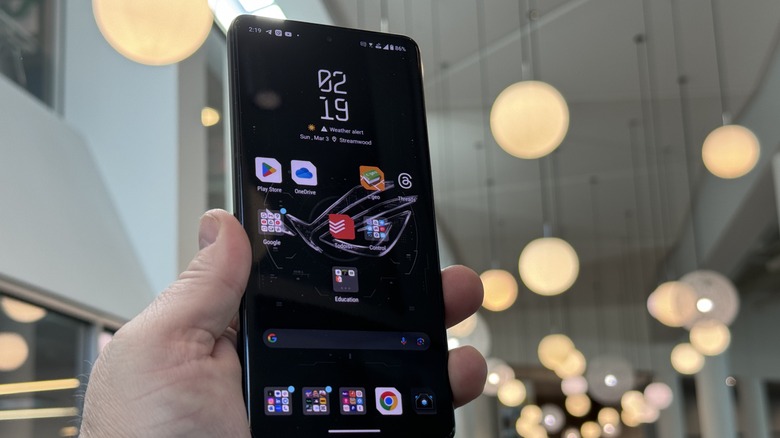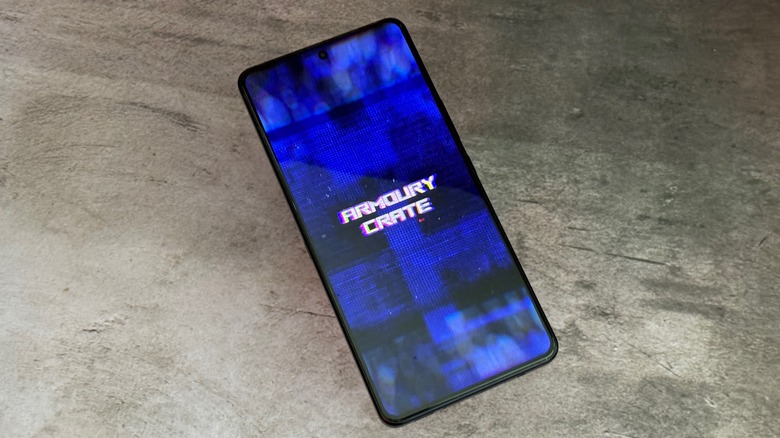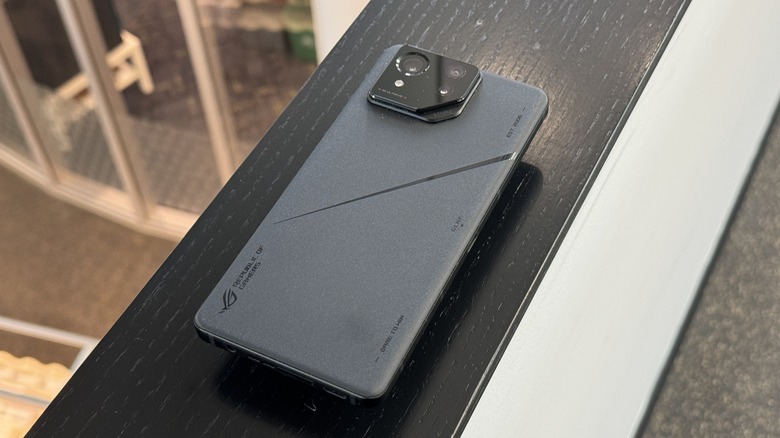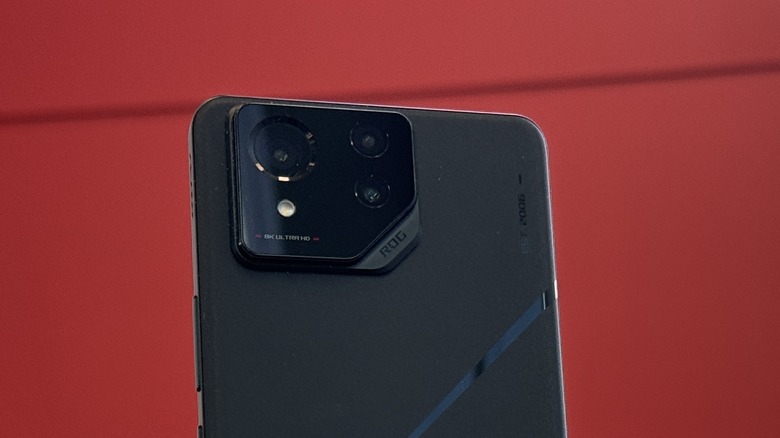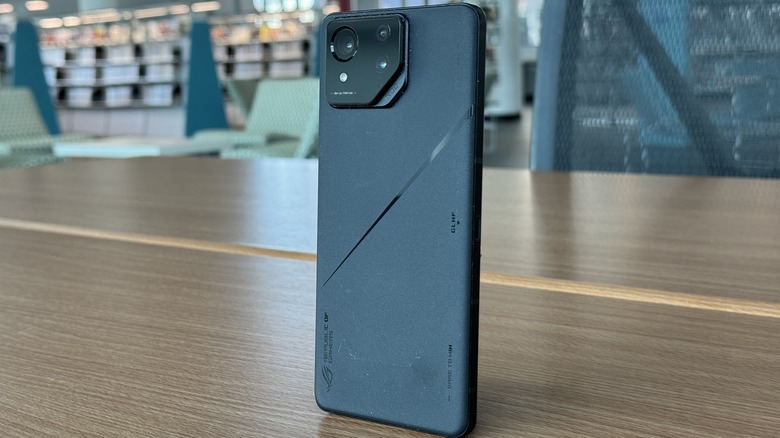ASUS ROG Phone 8 Pro Review: One Piece Still Missing
- Powerful processor
- Snappy responsiveness
- Awesome battery and display
- Fun design
- Useful secondary LED display
- Headphone jack
- Cameras are just ok
- Non-pro version is a better deal
When it comes to gaming phones, you will generally want the biggest, baddest phone you can find. You'll have the best processor, the most RAM, a ton of storage, and a massive battery, and if all this sounds familiar, that's because it also describes most flagship phones you can buy. But there's one area where gaming phones have traditionally fallen short — the camera. That's why it was surprising when ASUS announced that it wanted to be known as a great flagship, instead of a great gaming phone.
Specifically, ASUS wanted to let everyone know that it paid particular attention to the camera this time around, so it could launch a premium offering in all aspects of a phone, with no corners cut. That's quite a big ask. There's no question that this phone is seriously overpowered, but does that include the cameras? That's a question this review will answer. This review was written after spending two weeks on an ASUS ROG phone 8 Pro review sample provided by ASUS.
Onboarding
Normally, you wouldn't pay attention to onboarding for a phone, because if you've loaded your account into one phone, you see them all right? Wrong. The ASUS ROG Phone 8 Pro has a very unique onboarding process and of course, it's a game. But before you even get to that you have to open the box.
The box for the ASUS ROG phone 8 Pro looks like a hexagonal loot box that'd be right at home dropping in your favorite first-person shooter. You pull the red tab and lift the lid. You're immediately treated to the phone. In the lid, you have a case, the plug, and the additional air cooler that you can slap onto the back to help cool down the phone.
When you power up the phone, don't put the box away, because you're going to need it. When you walk through the normal Android onboarding process, you get a few additional options, like how you want the icons to look, which background you want to choose, etc. You can choose stock Android options, but by this point, you don't want to. When in Rome, right?
Up next, you launch into the onboarding game. The game gets you accustomed to your phone's various functions, like the air triggers and the gyroscope. You also have to tap the box in a couple of locations to get additional weapons for your spaceship in the game. Tap the sensor zone and get missiles. Slide the phone into the "ROG SERVER" and you'll get lasers. It's completely wild. You can skip it, but honestly, why would you want to?
Take in the phone
Once done with all that, you can get into the phone itself. The phone is an absolute beast with a Snapdragon 8 Gen 3 processor, 24 GB of RAM, 1 TB of storage, 5,500 mAh battery, and 165 Hz AMOLED screen. This phone is loaded for bear.
Meanwhile, on the back, there's an LED screen that can display various moving icons depending on what you're doing. This is called the AniMe Vision screen. When you're playing a game, it says "GAME", when you're playing music or a video, you get a graphic equalizer on the back that moves to the audio. When you want to take a photo with a timer, you get a countdown.
None of these elements are particularly useful, but boy howdy are they fun. You can have the LED screen play through the Republic of Gamers logo even when you're not doing anything specific. You can also disable any of these to save battery life.
The rest of the phone is fairly understated as gaming phones go. The large camera bump houses the triple camera setups and has a fun rectangle minus one corner shape. The back of the phone, including the LED area has a matte finish with a glossy stripe running through it. There are a few other accent words like "GLHF" and "Est 2006" and of course, "Republic of Gamers" but beyond that, there's nothing much to speak of.
USB-C ports (yes plural)
The ASUS ROG Phone 8 Pro comes with two USB Type-C ports. The first is on the bottom and it's not in the center like you'd normally expect. Instead, it's off to the left side opposite the headphone jack, and by the way, yes, this phone has a headphone jack. The offset USB-C port can be convenient at times when you want to charge and use your phone in a vertical orientation. Rather than trying to wrap your pinky awkwardly around the port, you can let the phone rest on its bottom. However, most phone stands have centered cable pass-throughs, so this phone will not work with those. Keep that in mind.
The second USB-C port is on the side of the phone, and it can be used to power the included cooler for the phone or to provide power to the phone while you're playing a game in landscape orientation. Both USB ports support the same 65W fast charging, so it doesn't matter where you plug your phone in. The phone also supports 15W wireless charging as well.
Software quirks
In addition to the onboarding options you can choose, the phone has some fun options for folders. Folder creation is very easy since each folder has a plus symbol that allows you to add apps quickly. You can also enlarge folders, similar to the Honor Magic 6 Pro and other Chinese manufacturers. The only problem with that is the folders will randomly resize back to their original size, so there's really no point.
One other nice thing about folders is they open near the bottom of the screen which makes reaching icons in them very easy with one hand. Similarly, in the app drawer, the search box appears at the bottom of the screen, which is delightful. It's a sort of quality of life improvement that you'll miss when you don't have it.
One thing you won't miss is the ASUS-provided duplicate apps for Phone, Calculator, Calendar, etc. There is simply no reason for these apps to exist. Perhaps in other markets where Google Services won't be required (read: China) they make sense, but in Western markets, they're just clutter.
As for the rest of the software, it is a fairly standard build of Android 14. You may like the launcher personalization that lets you choose the ASUS version or the Google version of the home screen, icon pack, etc. to spice things up a little more because this is an ASUS ROG phone after all.
Enter the Armory
The main piece of software that you can use to customize your phone is called the Armory Crate. This interface gives you all the information you need about the phone including current processor speed and temperature, available memory, screen optimization, your video and screenshot library, Aeroactive cooler settings, and more.
The Armory Crate also serves as your game library and allows you to set optimizations for each game on an individual basis. You can have separate key mapping, air triggers, macros, and display areas for individual games. Additionally, you can set your phone's performance mode for each game individually. "Call of Duty: Mobile" is going to require more resources than "Royal Match", for example.
This is also where you can set up your AniMe screen on the back of the phone, including loading custom LED profiles. These are not programmable — you need to download custom profiles from the web, which is unfortunate. It would be nice if ASUS could convert .gif or .jpg images into LED screen patterns, but that functionality is not here, which is a bummer.
Performance and battery
It should come as no surprise that this phone is an amazing performer. The Snapdragon 8 Gen 3 processor, which is the same that comes in the OnePlus 12 and the Honor Magic 6 Pro, is blazing fast. Games like "Call of Duty: Mobile" and "Genshin Impact" run great. But you'll notice extra performance even in everyday tasks like opening apps and folders. The phone seems to jump on any given command with the enthusiasm of a Jack Russell Terrier after drinking a double espresso. It's the most responsive phone you'll use and you'll have to stifle the desire to say out loud, "Whoa, man. I just want to open Facebook. Chill."
As for Geekbench, the ASUS ROG Phone 8 Pro helpfully opens "X" mode which puts a premium on performance right when you open Geekbench. Is this rigging the system? A little bit, but at least there's transparency, so there's that. As for the numbers, this phone pulls down 2,165/6,718 single/multi-core scores and as expected, that's right up there with the best performers on the market.
Despite this energetic performance, the ASUS ROG Phone 8 Pro is easily a two-day phone, but to really nail down those numbers, you should disable most of the AniMe LED panel on the back if you don't want to unnecessarily drain the battery. Some animations are fun, but a few of them are superfluous. Overall, you can easily hit two days with medium usage before needing to charge, with the included 65W charger in the box.
Cameras still lack polish
ASUS wants you to think of the ROG phone 8 Pro as a true flagship phone in every way, including the camera. You'll be happy to know this is the best camera set you can get on a gaming phone, but that is a pretty low bar. ASUS has noble ambitions here, but it still has a long way to go toward fulfilling those ambitions. That being said, there are some hits and some misses.
The phone ships with a triple camera setup on the back. The main camera is a 50-megapixel shooter with f/1.9 aperture and gimbal-stabilize OIS. The telephoto is a 32-megapixel shooter with f/2.4 aperture and 3x optical zoom, and the ultrawide camera is a 13-megapixel sensor with f/2.2 aperture and 120-degree field of view. On paper, this is not bad.
In reality, daytime photos are good, but relegated to "social media-good." On a small screen photos taken during the day look perfectly fine, but when you blow them up to 100% resolution, features like grass and nature start to lose depth and definition. There's also a noticeable color difference between all three lenses, especially in the blue sky which looks almost white in the ultrawide lens, a light blue in the main lens, and an almost blue-green in the telephoto. There's some work to do here with the color science.
Video capture good, photography just OK
Video on the other hand sees very good stabilization, thanks to the gimbal-mounted main sensor. This is a carryover from ASUS's Zenphone lineup and it performs admirably both in good light and in low light.
While the video picture can get a little bouncy along with footsteps, it's not off-putting or distracting. You can tell the phone is not on a track, but it's close. The same can be said at night — mostly. Specifically, the judder that you normally see while shooting at night and walking is almost (but not entirely) gone. That's a pretty big deal because all but the very best phones suffer from that.
Of course, the video captured is just ok. It's usable, but not amazing. There's quite a bit of grain in the darker areas and light sources tend to get blown out. You can do worse shooting video at night, but you can also do a lot better.
All told, the camera setup on this phone is good, but certainly not flagship quality. For a gaming phone, that's ok, but it certainly doesn't live up to ASUS's stated ambitions. Whether or not that's good for you or not is a question only you can answer.
Price, Availability, and Final Verdict
The ASUS ROG Phone 8 Pro is available from ASUS's website for $1,199 with 16GB of RAM and 512 GB of storage. As reviewed (with 24GB/1TB RAM/ROM) ASUS is asking $1,499. If you want to save some money, the ASUS ROG Phone 8 has the same specifications, except for 16 GB of RAM, 256 GB of storage, an RGB ROG logo on the back (instead of the AmiMe LED screen) — and that will keep you under the comma at $999.
That's probably the smartest way to spend your money. The LED screen is nice and fun to show off at parties. It's also genuinely useful when you have your phone face down on a table and a message comes in. But if you're on a budget, you should have no problem picking up the ROG phone 8.
This phone is a gamer's phone, no doubt. ASUS wants you to imagine it standing toe-to-toe with the best from Samsung or even OnePlus, and in most areas it certainly does. Plus it has style and panache which is something you just have to appreciate from gaming phones. But, make no mistake, this is a gaming phone, for better or for worse. There's nothing wrong with being a gaming phone, and if you're only ever going to share photos on social media, this phone ticks all the boxes. For most people, that's enough.
